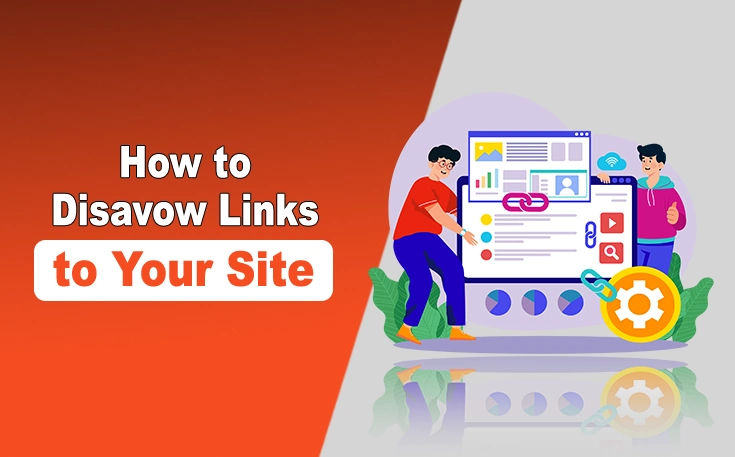If you’re chasing online success, you’re going to need a visible website. Many business owners spend a lot of time designing great websites. But they never appear in search engines. The problem lies in overlooking SEO issues. A beautiful website means nothing unless the content and technical side work well.
If your site feels like it’s stuck in digital limbo, you’re not alone. Many websites fail to rank not because they lack value, but because they’re tripping over hidden SEO issues.
Based on my years of experience in the SEO industry, I will uncover the top SEO issues that could be quietly spoiling your visibility, and how to turn things around.
Top 5 SEO Issues

1. Poor Technical SEO
Site speed, broken links, and crawl errors all impact rankings on search engine results pages (SERPs). Google (and other search engines, too) prioritise websites that are user-friendly and technically sound. If yours isn’t, it won’t be ranked as highly as one that meets these standards.
Mobile optimization falls into this category as well. These days, many people use their mobile devices for almost all tasks. If a site doesn’t work well on mobile, it will rank lower. Websites that aren’t secured with HTTPS won’t fare well either. To see how your website’s technical SEO is impacting on its ranking, use a tool like Google Search Console to help you spot issues.
Poor technical SEO negatively impacts keyword rankings, traffic, and user experience. It’s an issue for many areas of your website health, so it’s worth getting right.
Here are some common technical SEO issues to check:
- Slow page speeds. This can be caused by large image files or excessive HTTP requests. The result is a higher bounce rate and lower rankings.
- Duplicate content. Multiple URLs with the same (or similar) content confuse search engines and dilute the ranking signals.
- Broken links. 404 errors or excessive redirect chains are a problem because they aren’t good for user experience.
- No SSL/HTTPS security. This negatively affects a site’s reputation and user trust. Site security is crucial for search engines and users.
- Disorganized site architecture. A site with a logical structure and internal linking guides search engines. If it’s disorganized, bots can’t find or understand it.
- Poor mobile usability. Google prioritizes mobile-first use. If your site is not mobile-friendly, your search visibility will be lower.
Tips to Fix:
- Improve site speed: Use tools like Google PageSpeed Insights to identify bottlenecks.
- Ensure mobile-friendliness: Test your site on various devices and use a responsive design.
- Fix crawl errors: Use Google Search Console to identify and resolve issues.
- Implement structured data: Add schema markup to help search engines understand your content.
- Use HTTPS: Secure your site with an SSL certificate
2. Weak or Duplicate Content
Quality content is much more crucial than quantity these days. There used to be a time when you could add reams of blogs and articles, spam them with keywords, and you’d rank well. Now, search engines can examine your content in terms of user value. Content that is duplicated, thin, or irrelevant harms your SEO.
A good rule is to use the EEAT approach, referring to expertise, experience, authority, and trust. No matter your business, your content needs to sell your organization as experienced experts who have authority and respect in their industry. If two websites are targeting the same keywords but one has invested in better content, it’s that one that will be ranked higher.
For example, credentials, author bios, and links to professional profiles on LinkedIn can all reinforce the human behind the words. Another way to personalize and humanize your site is to add unique case studies, first-hand experiences, and use original data. This shows experience; you’re not just repeating something that someone else has on their website.
Tips to Fix:
- Audit your content: Use SEO tools like Screaming Frog or SEMrush to find duplicate or thin pages.
- Create original, valuable content: Focus on solving user problems or answering questions.
- Use canonical tags: Prevent duplicate content issues by specifying preferred URLs.
- Update outdated pages: Refresh old content with new data, insights, or visuals.
💡Pro Tip
Start with a compelling hook to grab attention, deliver value quickly, and write like you’re having a conversation. Use clear language, short paragraphs, and visuals to keep readers engaged.
3. Poor Keyword Strategy
Another thing that harms SEO is your strategy for using keywords. Keyword stuffing is an outdated practice, and keywords now need to match user search intent and be integrated into your content naturally. Don’t ignore long-tail keywords either. These can capture very relevant traffic and help your rankings. Avoid targeting only broad, highly competitive terms.
Successful keyword strategy now means looking more closely at user search intent. Why are they searching? Do they just want information? Are they researching a product to buy? Are they ready to take action? When you look at using keywords in a way that maps them to the user’s journey stages, you’ll meet users where they’re at, whether that’s awareness, consideration, or decision.
Tips to Fix:
- Do proper keyword research: Use tools like Ahrefs, SEMrush, or Google Keyword Planner.
- Target long-tail keywords: These are less competitive and more specific.
- Map keywords to intent: Align keywords with what users are actually looking for.
- Avoid keyword stuffing: Use keywords naturally within high-quality content
4. Weak Backlink Profile
Backlinks are one of the harder parts of SEO to deal with but they’re still one of the top ranking factors in Google. The best backlinks are earned from reputable and relevant sites because your content deserves them.
There are strategies you can use to improve your backlink profile (or get one), including digital PR, guest posting or creating link-worthy resources. Internal linking is also relevant here. It helps search engines discover content and distribute authority effectively across your whole site.
Tips to Fix:
- Create link-worthy content: Publish research, infographics, or expert roundups.
- Reach out for backlinks: Contact relevant sites for guest posts or link placements.
- Disavow toxic links: Use Google’s disavow tool to remove harmful backlinks.
- Monitor your profile: Use tools like Moz or Ahrefs to track and improve your backlink health.
5. Ignoring User Experience
Your website user experience (UX) shouldn’t be ignored. You want your visitors to find everything they need and enjoy their time on your site. Intrusive pop-ups, navigation issues, and your bounce rate all affect your rankings.
Semrush advocates for a bounce rate of 40% or lower, but you should definitely avoid being above 60%. The page experience is important for Google’s Core Web Vitals. And for good reason. A website that frustrates users won’t rank well, even if it is technically optimized.
Tips to Fix:
- Improve navigation: Make it easy for users to find what they need. Use proper menus and search bar for this purpose.
- Optimize for mobile: Ensure fast loading and a responsive design on smartphones.
- Use clear CTAs: Guide users with buttons and prompts that are easy to understand.
- Reduce clutter: Keep design clean and focused on user goals.
Final Thoughts
Most ranking problems stem from common SEO issues. Fixing them can dramatically improve your website’s visibility. Remember, search engine algorithms are constantly changing, which means your SEO can’t be a “set it and forget it” affair.
Regular audits are needed to make sure you stay at the top of your game, and at the top of Google. Your competitors are always publishing new content. They’re building links and improving their technical setup too. If you’re not, you’re falling behind.
Need custom app with amazing features?
Get a Quote




